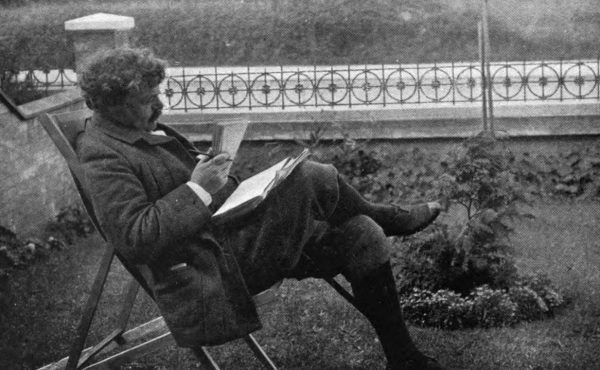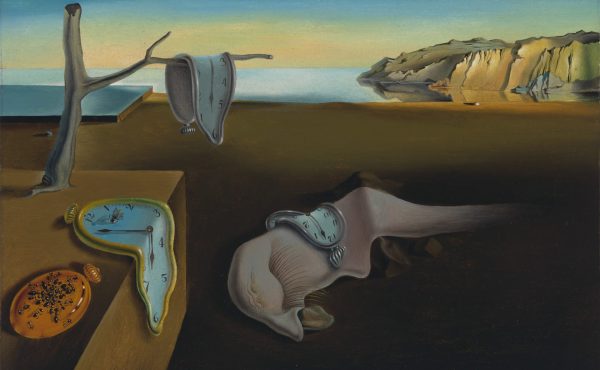This post was inspired by the theme of the upcoming Dawson Society conference: Home: Family. Place. Economics. Topics such as this and many more will likely find thorough treatment at the conference. For more information, see here. We will look forward to seeing you at the conference in July.
If ever an author were to be forgiven a nostalgic or saccharine vision of home surely it must be J. R. R. Tolkien. As a veteran of the Battle of the Somme and suvivour of trench fever, Tolkien had every reason to propagate an idealised vision of the home as a refuge from the horrors he witnessed in France.
On the surface at least, it appears that Tolkien’s vision of home is every bit as simplified and idealised as a man retreating from the worst aspects of modernity might make it. The target this criticism is most obviously the construction of The Shire and the idyllic, almost pre-lapsation, life of its inhabitants. While Tolkien’s work has always been popularly embraced, it has also attracted the ire of critics who have seen the novel as a trojan horse of anti-modern, technophobic, and regressive views.[i]
Yet, for all its reputed simplicity, Tolkien’s vision of the home is far more complex and nuanced than it might first appear to readers. And it is worth turning our attention to what Tolkien’s legendarium might be able to teach us of the importance (and the limitations) of home.
“In a hole in the ground there lived a hobbit.”
The Hobbit famously begins with a reflection of homeliness in the context of the homeliest of fictional creatures, hobbits. And the essence of homeliness, we are told, is comfort. This comfort is distinct from luxury, it stems from neither greed nor hedonism. It is a positive, and very human (hobbit?) good. And yet, as soon becomes clear, the homeliness of Mr. Baggins and the comfort of Bag End is close approaching a flaw in his character that must be overcome.
Bilbo Baggins is certainly a very well-meaning character, but his virtues are completely untested. Indeed, Bilbo’s entire character is ill-defined at the novel’s start as he has had no impetus to define it. The comfort that most characterises his life threatens to stunt his moral and psychological growth.
Bilbo’s adventure across the course of the novel thus doubles as a character (as well as a literal) journey. By the novel’s conclusion, Bilbo Baggins is a far more distinct and estimable character than he begun. Seen in this way, the Shire is not an uncomplicated ideal. It might be understood instead as a rather fussy and claustrophobic setting stupefying its inhabitants into moral (and perhaps physical!) stuntedness.
And yet, this reading too might prove simplistic. When Bilbo returns from his adventure, the dragon slain and treasure recovered, he is greeted in Rivendale by the song of the elves whose song not only reminds the listener of the pretentions of those who seek power and wealth but also includes the lines “The fire is more shining, On hearth in the gloaming, Than gold won by mining, So why so a-roaming?” seemingly discrediting Bilbo’s whole adventurous affair.
Moreover, Bilbo returns to the Shire and returns (largely) to the life he inhabited before his journey to the Lonely Mountain. He does not seriously seek to convert his fellow hobbits from their established habits nor even to disrupt (barring perhaps the famous birthday party in The Fellowship of the Ring), the well-worn routines of his home. Were the Shire without moral value or its inhabitants without any depth, it seems unlikely that the now more cosmopolitan and adventurous Mr. Baggins would tolerate living there.
The role of the home in The Lord of the Rings compounds many of the tensions established in The Hobbit and establishes some new dimensions. The Shire’s role in the plot is more significant in The Lord of the Rings than The Hobbit inasmuch as the peace and safety of its inhabitants are directly threatened by the growing threat of Mordor (and its subsidiary, Isengard).
The stupidness or narrow-mindedness of the Shire’s residents (à la Bilbo Baggins at the start of The Hobbit) is echoed in the thankless task of Aragorn and the other Dúnedain who are mistrusted and mocked by those who live “within a day’s march of foes that would freeze [their] heart[s], or lay [their] little town in ruin.” The ignorance of the Shire of the ceaseless guard surrounding them creates an insularity which is hardly endorsed by the novel and yet, in Aragorn’s own assessment, “if simple folk are free from care and fear, simple they will be.” The Shire then is certainly not to be despised for its innocence (or ignorance). Yet it cannot be ignored that the peace and comfort of the Shire rests on shoulders other than those of its own inhabitants.
The ending of The Lord of the Rings, in this regard, differs substantially from that of The Hobbit. The four hobbits that return to the Shire do not leave the social mores and intellectual habits of their home unchallenged. Indeed, they have no choice but to challenge the comfortable habits of the Shire and to rouse the hobbits into action, against the influences of Isengard. And, while the series ends with a restoration of the comforts and pleasantries enjoyed by the hobbits, the Shire does not return exactly to what it was before its rousing. The Shire becomes a little less insular, a little more confident, and a little more connected to higher virtues through the evangelising influence of Frodo, Sam, Merry, and Pippin.
A final dimension to home and homecoming is explored to in the fate of Frodo. Spiritually wounded by his long burden of the One Ring, the morgul blade of the Nazgul, and Shelob’s sting, Frodo is unable to find peace in the Shire. For Frodo, there can be no homecoming or at least there can be no true homecoming in Middle Earth. The story ends with Frodo taking a ship from the Grey Havens to the Undying Lands.
What then to make of home and homecoming in Tolkien’s writings?
Reader’s must first recognise some of the tensions held in Tolkien’s depiction of the Shire. The Shire is in some respects a rural ideal. It embodied pleasantries and comforts that are genuine goods. Hobbits are peaceful creatures not by accident but because they lack warlike characteristics and worldly ambitions. Their commitment to ‘the good life’ is part of what allows their peaceful existence.
Yet the very characteristics that make the Shire such an idealistic setting also poise a moral threat to its inhabitants. With the Dúnedain departed for the war in Gondor, the Shire’s long peace leaves it peculiarly vulnerable to the machinations of Saruman. Unaccustomed to the need to defend their way of life, the hobbits of the Shire find themselves reflexively following the orders of a small clique of ideologically motivated outsiders.
Moreover, even without such external threats, the tranquillity and comfort of the Shire threatens the moral growth of its inhabitants. In such a comfortable and pleasant setting, there is always the temptation to retreat to a parochialism, regarding much of what the wide world has to offer as strange, dangerous, and therefore to be reflexively rejected. Frodo’s fate too is instructive of the limitations of the Shire. As comfortable and pleasant as the Shire may be, it does not seem to offer a fitting telos for its inhabitants.
Tolkien was famously averse to allegory and readers ought to be cautious of uncritically applying his stories to circumstances vastly different than Middle Earth. Yet I think that in the goods and the limitations of the Shire readers might be able to recognise something of the proper role a home and the tensions embodied in it.
Homes ought to be pleasant and peaceful, full of genuine goodness and virtue. Yet readers should also be aware of the corresponding temptation to idolise (or idealise) the home. For, after all, we like Frodo must go elsewhere for our final peace.
[i]Perhaps the most interesting (or at least unusual) critique of Tolkien in this vein is the revisionist novel The Last Ringbearer by Kirill Eskov. The Last Ringbearer, an unauthorised sequel to The Lord of the Rings, tells its story from the perspective of the villains of Tolkien’s original. In this version, Gandalf is a luddite reactionary seeking to destroy Mordor, itself a rationalist and scientific civilisation, in the name of superstition and primitivism.
If you enjoyed this piece, you might also like to listen Dr. Conor Sweeney’s lecture for the Dawson Society from some time ago on ‘How to be a Hobbit’, a lecture that later became a book, Abiding the Long Defeat.



